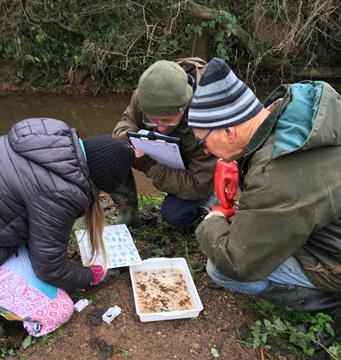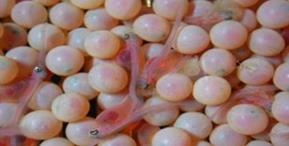Exploring the Mor Brook
The first river health training session went ahead this month at the diverse and picturesque Mor Brook. The 11 mile long Brook begins its journey south of Much Wenlock and travels south east past Bridgnorth and Eardington to join the Severn near Crateford. The Brook meanders through a variety of land uses including a quarry, agricultural land and woodland. Although it was a very cold day, the team and enthusiastic bunch got stuck in and learnt a technique called kick sampling. This technique is used to collect a representative sample of invertebrates as they are key indicators to river health due to different species being more tolerant to pollution than others. The group found a mixture of invertebrates including damselfly larvae, burrowing mayfly, swimming mayfly, freshwater shrimp and case cadis all of which are a good indication of a healthy river. Further to that, a chemical test of the water was taken which showed normal levels of the chemical parameters we would expect in rivers. For example nitrate levels were below 0.25mg/l (milligrams per litre) in contrast to 10mg/l standard level of nitrate in drinking water. Therefore, showing low levels of nitrate within the water and a overall healthy river.




